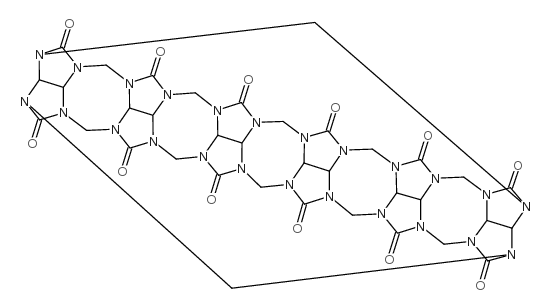Unusual complex formation and chemical reaction of haloacetate anion on the exterior surface of cucurbit[6]uril in the gas phase.
Tae Su Choi, Jae Yoon Ko, Sung Woo Heo, Young Ho Ko, Kimoon Kim, Hugh I Kim
Index: J. Am. Soc. Mass Spectrom. 23(10) , 1786-93, (2012)
Full Text: HTML
Abstract
Noncovalent interactions of cucurbit[6]uril (CB[6]) with haloacetate and halide anions are investigated in the gas phase using electrospray ionization ion mobility mass spectrometry. Strong noncovalent interactions of monoiodoacetate, monobromoacetate, monochloroacetate, dichloroacetate, and trichloroacetate on the exterior surface of CB[6] are observed in the negative mode electrospray ionization mass spectra. The strong binding energy of the complex allows intramolecular S(N)2 reaction of haloacetate, which yields externally bound CB[6]-halide complex, by collisional activation. Utilizing ion mobility technique, structures of exteriorly bound CB[6] complexes of haloacetate and halide anions are confirmed. Theoretically determined low energy structures using density functional theory (DFT) further support results from ion mobility studies. The DFT calculation reveals that the binding energy and conformation of haloacetate on the CB[6] surface affect the efficiency of the intramolecular S(N)2 reaction of haloacetate, which correlate well with the experimental observation.
Related Compounds
| Structure | Name/CAS No. | Molecular Formula | Articles |
|---|---|---|---|
 |
cucurbituril
CAS:80262-44-8 |
C36H36N24O12 |
|
Synthesis, processing and solid state excipient interactions...
2010-12-06 [Mol. Pharm. 7(6) , 2166-72, (2010)] |
|
An intelligent anticorrosion coating based on pH-responsive ...
2012-12-21 [Nanotechnology 23(50) , 505705, (2012)] |
|
Study on the inclusion interaction of cucurbit[n]urils with ...
2010-02-01 [Spectrochim. Acta. A. Mol. Biomol. Spectrosc. 75(2) , 912-7, (2010)] |
|
Glyco-pseudopolyrotaxanes: carbohydrate wheels threaded on a...
2010-10-25 [Chemistry 16(40) , 12168-73, (2010)] |
|
Binding studies on CB[6] with a series of 1-alkyl-3-methylim...
2010-03-01 [Chem. Asian J. 5(3) , 530-7, (2010)] |